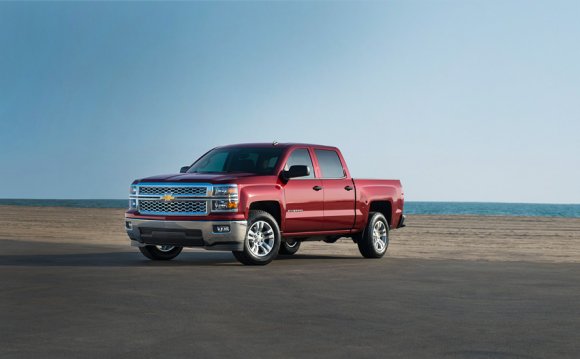
 Thanks to the gradual economic recovery and an abundance of credit at a level we haven't seen in years, Americans are buying record numbers of cars every month. And with ultra-long car loans becoming the new normal, that means Americans are buying more expensive, more loaded vehicles than ever.
Thanks to the gradual economic recovery and an abundance of credit at a level we haven't seen in years, Americans are buying record numbers of cars every month. And with ultra-long car loans becoming the new normal, that means Americans are buying more expensive, more loaded vehicles than ever.
reported this week that new car transaction prices are rising steadily along with sales volumes. The average new car price is now $31, 341, up 2 percent from last year, which may not seem like a lot at first but really is when you take all cars sold into consideration.
Longer loan terms generally mean lower payments, so American buyers are biting the bullet and getting nicer cars with more features. Heck, it even means salespeople are able to push buyers into larger, more expensive models than they originally sought. This helps explain the leap into crossovers for people on a small sedan budget.
From the story:
A 72-month, no-interest loan gives buyers who want to keep their payment at $500 a month the ability to spend $6, 000 more than with a 60-month loan. It allows spending $4, 800 more for those who think they can afford $400 a month.
"I can't tell you the last time I saw something less than 72 [months], " said Pete Munson, general manager of Great Lakes Chevrolet in Jefferson, Ohio. "They just want the most car for the least amount of monthly payment. They don't look at the overall price of the car."
Munson said he doesn't push 72-month loans, but that's what customers request so they can stay within their monthly budget.
"If you can get a base Cruze LS at 48 months or you could potentially get into a much nicer Malibu at 72 for about the same amount of money monthly, most people are going to take the nicer car, " Munson said.
The only thing that matters to these throngs of new car buyers, it seems, is how low their monthly payment is. Everything else — down payment, interest rate, term of the loan, residual value — is incidental.
All those incredible sales numbers automakers have been posting every month seem like sunshine and lolipops, but there's a much darker side to this trend. Writing for, ex-TTAC editor Ed Niedermeyer raises some good points about why we should be a little concerned.
It's hard not to see this as maybe too many people buying cars they can't afford in the long term, and since they're all financed, what will happen with all of that outstanding debt?
How long can it last? With residual values faltering, and Fed rates likely to increase, demand for securities backed by bundled auto loans could soon take a hit. Without demand on the securitization side, the ever-expanding pool of auto credit could start to dry up. When the bubble pops, the effect won't simply come in the form of losses on the loans themselves. Rather, as repossessed vehicles flood the market, used vehicle values will drop to the point where they begin to lower new car demand. By juicing short-term sales, automakers and new-car dealers have been robbing from their own futures.
YOU MIGHT ALSO LIKE












